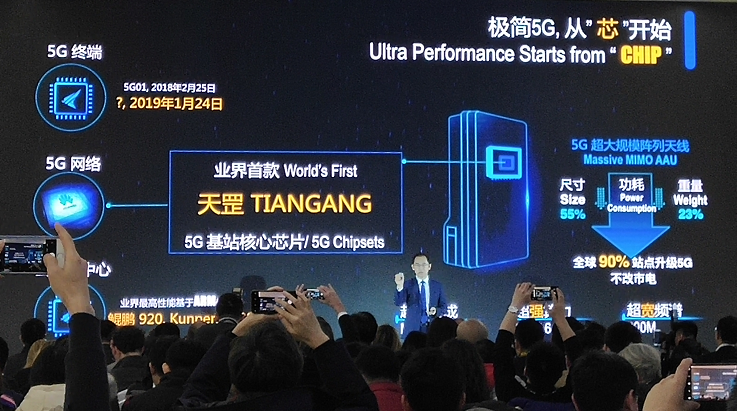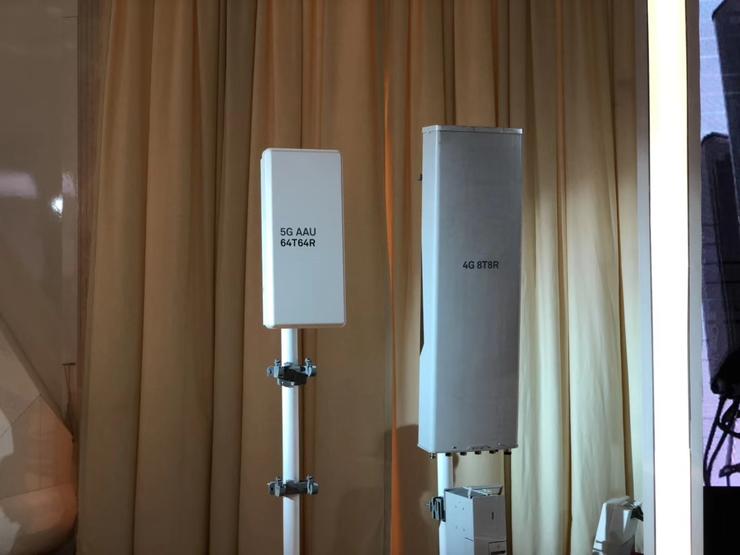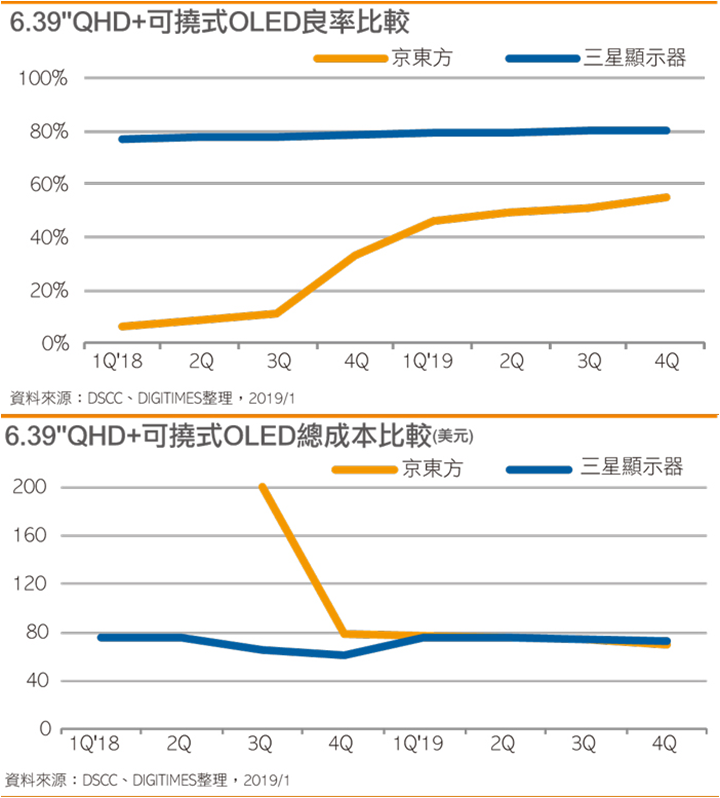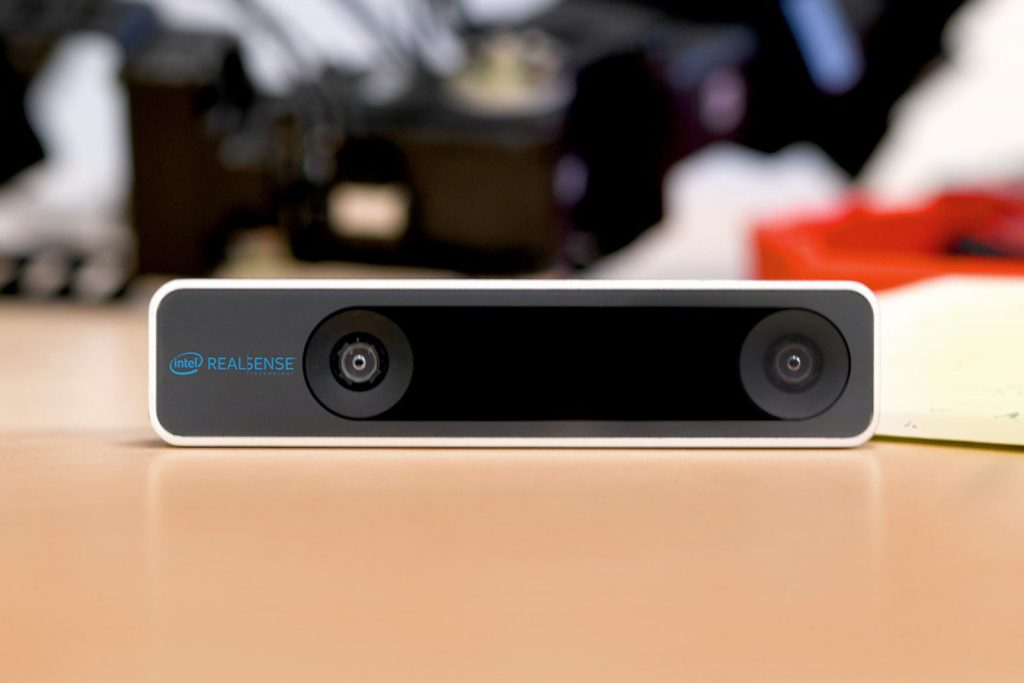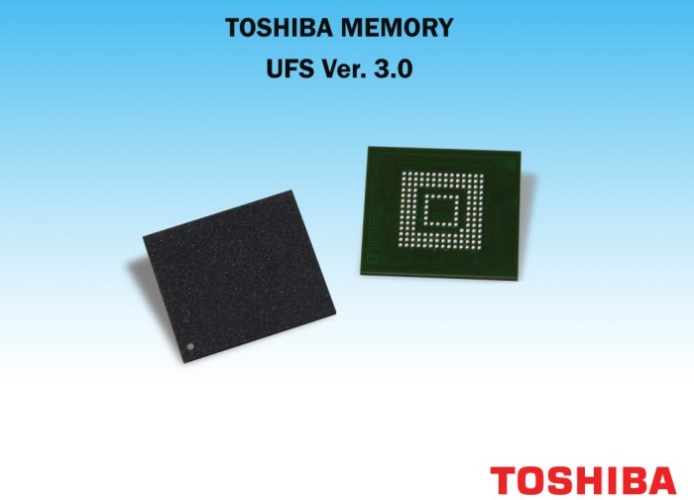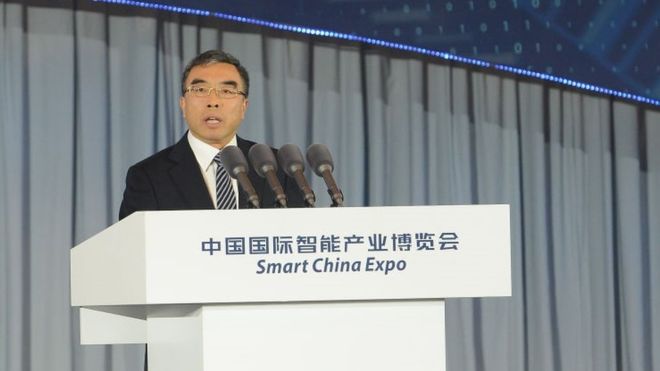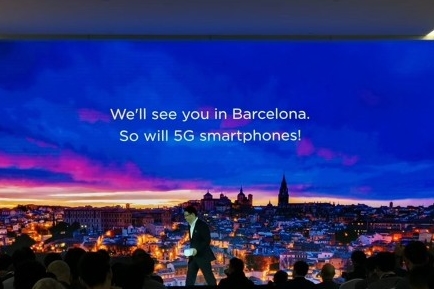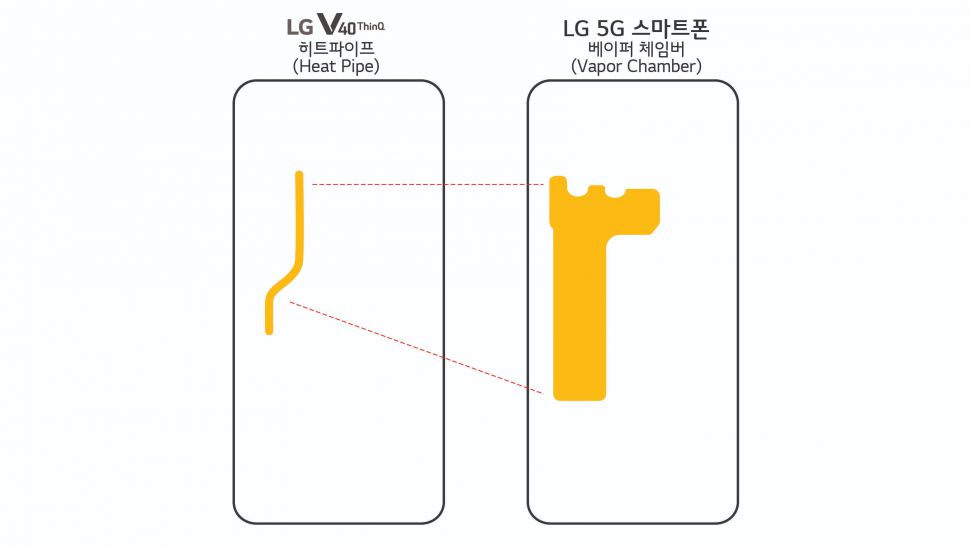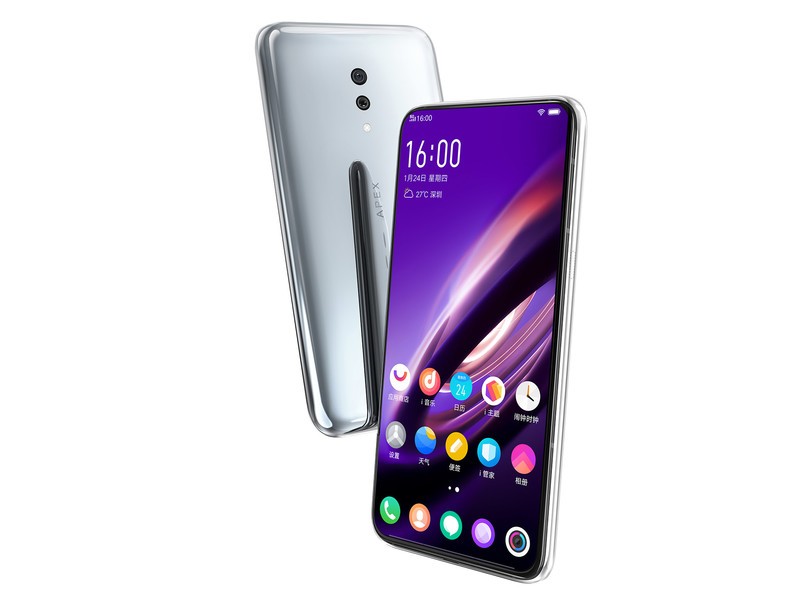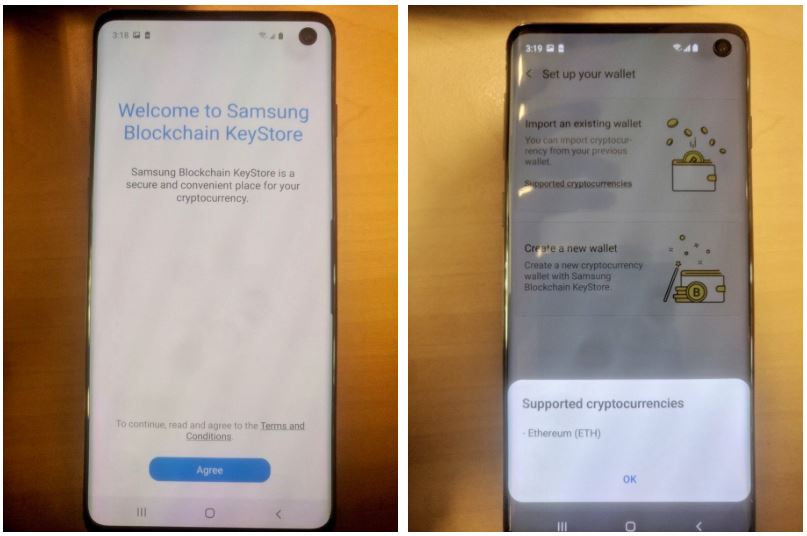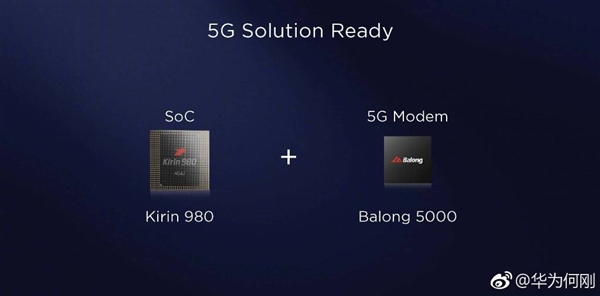
01-24: Huawei is announcing 5G modem Balong 5000, and the world’s first 5G base station core chip Tiangang; etc.
Chipsets
The head of Huawei’s consumer business group, Richard Yu, unveils the so-called most powerful 5G modem in the world Balong 5000, which fully supports both Non-Standalone (NSA) and Standalone (SA) 5G network architectures. Balong 5000 is also the first multimode chip in the world to support V2X (vehicle-to-everything) communication that offers a highly reliable car networking solution with low latency. (NBD, My Drivers, Reuters, Gizmo China)
Huawei officially announces the world’s first 5G base station core chip – Tiangang. The Tiangang claims to bring forth a performance increase of 2.5 times over its 4G network chipset. For reference, the Tiangang chipset-powered base stations consume 21% less power, and are almost 50% smaller than similar 4G LTE base stations. (CN Beta, Caijing, OfWeek, Telecom Lead, 91Mobiles)
Several major China- and Taiwan-based contract chipmakers including United Microelectronics (UMC), Semiconductor Manufacturing International (SMIC), Vanguard International Semiconductor (VIS), Hua Hong Semiconductor and Powerchip Technology have cut their quotes in order to attract more orders to fill their fab capacities during 1Q19, according to Digitimes. (Digitimes, press)
The chief executive of the semiconductor toolmaker ASML Peter Wennick indicates that Chinese demand for semiconductor manufacturing equipment has not slackened. He reveals that in 4Q18 the company received 5 orders for its EUV equipment, and in 2019 the demand has increased to 30 units. (CN Beta, Seeking Alpha, OfWeek, Reuters, Business Live)
Touch Display
BOE Technology is likely to begin posing a threat to the leadership enjoyed by Samsung Display for the production of flexible AMOLED panels by the end of 2019, buoyed by its improving yield rates and continued capacity ramps using government subsidies. According to data compiled by Display Supply Chain Consultants (DSCC), BOE’s yield rate for the flexible 6.39” QHD+ AMOLED panels, for instance, stood at slightly higher than 10% in 3Q18 and improved to over 30% in 4Q19. By the end of 2019, the ratio is likely to climb over 50%, DSCC estimated. (Digitimes, press, Digitimes, CN Beta)
Camera
Intel has introduced the Intel RealSense Tracking Camera T265, a new class of stand-alone inside-out tracking device. The T265 uses proprietary visual inertial odometry simultaneous localization and mapping (V-SLAM) technology with computing at the edge and is key for applications that require a highly accurate and low-latency tracking solution, including robotics, drones, augmented reality (AR) and virtual reality (VR). (Engadget, Intel)
Memory
Toshiba has announced the industry’s first embedded flash chips to use the ultra-fast Universal Flash Storage (UFS) version 3.0 technology. Toshiba said that the new chips use the cutting-edge 96-layer BiCS FLASH, the company’s 3D flash memory technology, and a controller in a JEDEC-standard 11.5 x 13mm package. Chips will be made available in three capacities: 128GB, 256GB, and 512GB. (CN Beta, AnandTech, IT Home, Tom’s Hardware)
Battery
Apple has hired an executive from Samsung SDI, the battery making affiliate of Samsung Electronics, to help lead its own battery work. Apple has used batteries from Samsung SDI to power its own products in the past. Apple has also been in talks to buy cobalt, a key component of battery packs, directly from miners. (Phone Arena, Bloomberg, Sina, CN Beta)
Material
Rapid growth in demand seen over the past 2 years for wearable devices including smartwatches and wireless headsets will carry into 2019, serving as a significant growth driver for shipments of both flexible and rigid-flex PCBs in the year, according to Digitimes. (Digitimes, press, China Times)
Phone
According to Huawei chairman Liang Hua, the company could shift away from Western countries if it continues to face restrictions. He has also stressed that Huawei follows regulations wherever it operates. (BBC, Android Headlines, Strait Times, RFA)
Huawei Consumer Business Group CEO Richard Yu has confirmed that the company will launch its 5G foldable phone powered by its own Kirn 980 and Balong 5000 modem in MWC 2019. (My Drivers, Sohu, Mobile World Live, Gizmo China)
LG has confirmed that it will launch its first 5G smartphone powered by Qualcomm Snapdragon 855 and 4000mAh battery at MWC 2019 in Barcelona, Spain. The vapor cooling chamber for thermal management, and the chamber size has been increased by 2.7 times over the V40 ThinQ’s heat pipe. (GizChina, Gizmo China, Sina, TechRadar, LG)
vivo APEX 2019 is announced with a minimalist design which completely abandons the use of physical buttons – Qualcomm Snapdragon 855, rear dual 12MP-13MP, 12+256GB, Touch Sense (a combination of capacitive touch and pressure sensing), Body SoundCasting, Full-Display Fingerprint Scanning. (Engadget, GizChina, CN Beta)
Robotics
HTC has teamed up with a hospital in Taiwan to launch a blockchain-enabled healthcare chat robot, dubbed LINE Bot, as it moves to deepen its deployment in the precision medicine and healthcare industry. The LINE Bot is designed to offer healthcare services leveraging AI-centric technology with enhanced information security based on HTC’s blockchain-focused DeepQ medication platform. (Digitimes, press, Medium, UDN)
Automotive
Apple has allegedly released more than 200 employees from its “Project Titan” group, a branch of the company focused on developing self-driving car technologies. (TechCrunch, CNBC, Apple Insider, Sina)
Fintech
Samsung might launch its own blockchain wallet alongside the Galaxy S10. The Samsung Blockchain KeyStore looks to be a blockchain wallet, which supports Bitcoin, Bitcoin Cash, and Ethereum-derived token ERC20 at launch. (Android Authority, Sam Mobile)
